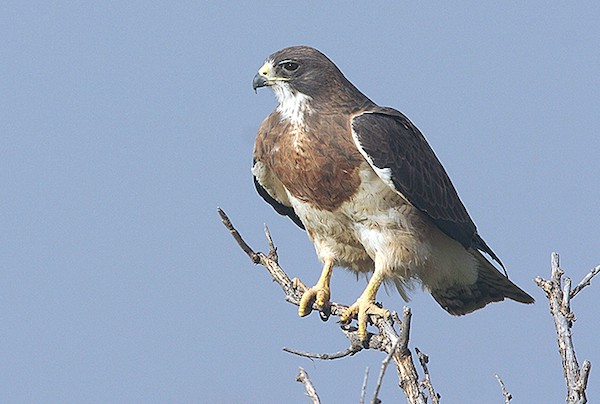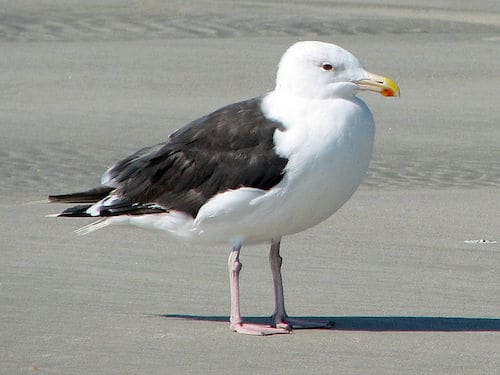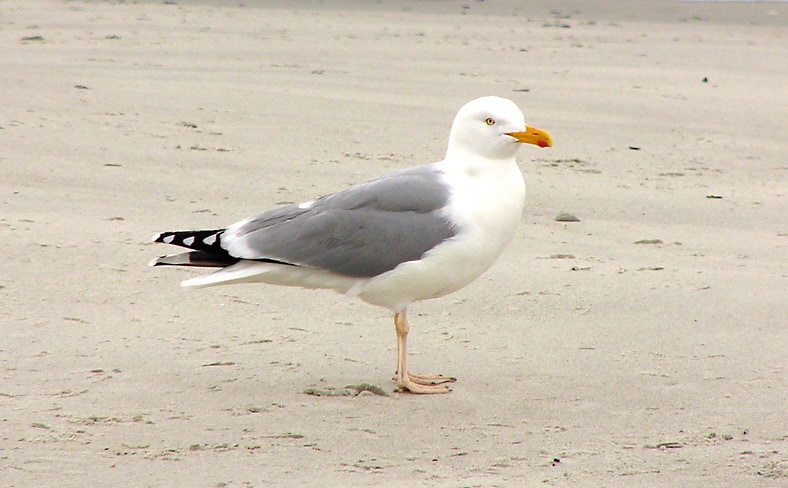Look for
The Savannah sparrow is a small bird with a grayish-brown upperparts with crisp, dark streaks. It has white underparts with narrow, dark streaks on the breast and flanks. It resembles the song sparrow, and sometimes sports a central dark dot on the breast. It has a short tail, though, a smaller, pinkish bill and legs, and a distinctive yellow patch on its lores—between the eye and bill.
Listen for
The Savannah sparrow’s song consists of a couple rapid short notes that lead into a high-pitched buzz and ends with a final lower trill. Tsip-tsip-tsip-zeeeee-serp. Its call is a thin, soft tsip.
Find it
The Savannah sparrow is one of the most common songbirds in all of North America and has a range that stretches out across most of the continent in various seasons. It breeds across most of Canada and Alaska as well as virtually all the northern states.
It can be found primarily in open grasslands as well as in meadows, pastures, prairies, salt marshes, and tundra. In autumn, most Savannah sparrows migrate to the southern states as well as into Mexico and other parts of Central America.
Diet
During breeding season the Savannah sparrow feeds primarily on insects including beetles, flies, grasshopper, spiders, and millipedes. They forage by walking through grassy areas on the ground or among shrubs and short trees. They sometimes fly to catch insects midair, and those that live on the coast sometimes eat small crustaceans on beaches. The Savannah sparrow also eats a variety of seeds and berries.
Nesting Behavior
The Savannah sparrow builds its nest on the ground hidden among tall grass, weeds, and dense dead foliage. The female constructs an open cup shape using primarily grass and lines it with thinner, finer grass.
She lays two to six eggs that can be a range in color from a tannish-white to pale green or blue, usually with dark markings or spotting. The female alone incubates for 12-13 days. Both parents feed the young before they fledge after an average of 8-11 days.
WOW!
After migration Savanna sparrows often return to the area where they hatched. They have strong nest site fidelity, or, as ornithologists call it, natal philopatry.




